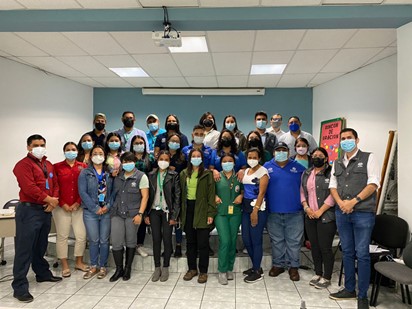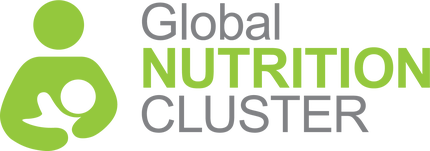Request support on coordination, information management, integration for nutrition outcomes or technical nutrition in emergencies assistance.
التماس الدعم لتنسيق التغذية وإدارة المعلومات والتغذية في حالات الطوارئ
Demander un appui pour la coordination de la nutrition, la gestion de l'information et la nutrition dans les situations d'urgence
Buscar apoyo para la coordinación de la nutrición, la gestión de la información y la nutrición en situaciones de emergencia
Solicite apoio para coordenação em nutrição, gestão de informação e nutrição em emergências
According to the most recent health and nutrition national survey, the country of Honduras has a global acute malnutrition (GAM) rate of 1.9 percent among children aged 6-59 months (roughly 38,000 children), with higher prevalence in San Pedro Sula (3.1 percent) and among children specifically between 18-23 months old. The Joint Intersectoral Analysis Framework (JIAF) also has cited high levels of micronutrient deficiencies across the entire country for children between 6-59 months as well as for pregnant women, classifying the need between severe to critical (3-4 on a scale of 1-5 in severity).
Even prior to the COVID-19 pandemic and back-to-back hurricanes, Eta and Iota, which devastated the nation of Honduras, malnutrition rates were high. The 2021 Humanitarian Needs Overview stated that at the time 70 percent of the population in Honduras lived in poverty. Gender-based Violence meant a lack of protection for women and girls and a lack of support for children during the 1,000-day window increased women and children’s risk of malnutrition.

These worrying nutrition figures posed a very high risk of morbidity and infant mortality – especially as there was not enough visibility and awareness about the problem nor sufficient capacity within the country’s nutrition sector to adequately carry out the emergency actions needed to address the scale of needs.
As a result, the nutrition of the Honduran population hung in the balance, especially among the most vulnerable – all children under five years of age, especially children under two years, and pregnant and breastfeeding women.
Access to nutrition and health services was limited and child-feeding practices and the detection and prevention of acute malnutrition needed improvement. Also, people were living in unsanitary conditions with limited access to potable water and food and many people’s livelihoods were affected, which compounded their food and nutritional insecurity.
Until 2021, the country’s national response to food and nutrition security focused exclusively around the availability-access-consumption of food and livelihoods support for those affected by the various crises. It largely excluded specific nutrition actions for the prevention and treatment of acute malnutrition in order to avoid malnutrition-related deaths. However, food distributions alone did not cover the nutritional needs of the most vulnerable.
Developing a national IYCF-E action plan
When tackling nutrition, one of the biggest challenges Honduras has long faced is a capacity gap – there are simply little to no actors in-country who hold expertise in Emergency Nutrition.
In 2021, the GNC Technical Alliance was called upon to help implement an Infant & Young Child Feeding in Emergencies (IYCF-E) response for the first time in the hurricane-affected North. There, the Alliance helped develop advice on infant and young child feeding for caregivers of children aged 6-23 months, how to manage the uncontrolled donation of milk powder, how to initiate a protocol for the proper use of breast milk substitutes (BMS) for babies under six months who cannot be breastfed as well as created a mass communication campaign to communicate key practices of IYCF-E, with a particular focused on reaching men and fathers with this important information.
This eight-month program drew a lot of interest from health professionals and key actors. With a surge of interest and a new government coming into power who prioritized nutrition, it was an ideal time to continue building momentum. But lacking the technical capacity to develop a strategic plan with a complete vision of the needs at different levels, support from the Alliance was once again requested.

The priority this time was to work with UNICEF Honduras to develop a detailed action plan in IYCF-E that could influence the new government’s policies, support advocacy activities, and guide nutrition actors as they work to implement programs and raise funds.
The support provided included:
- Analyzing the current IYCF-E situation and capacity to address it through a qualitative assessment, including interviews with key stakeholders.
- Forming a technical team to develop an action plan based on the gaps and needs with input from partners from other sectors, including child protection, food security, health, and water, sanitation and hygiene.
- Creating a capacity assessment report of the key actors in the nutrition, health, and child protection sectors in Honduras.
- Developing an IYCF-E action plan for the nutrition sector that would lead to:
- Improved intersectoral coordination for specific nutrition in emergency (NiE) interventions
- Increased local capacity for emergency preparedness and response in the nutrition sector
- The implementation of protocol for the proper use of breast milk substitutes (BMS)
- The training needs of key agencies in the frontline response being addressed
- The establishment of a monitoring and evaluation system for emergency nutrition interventions
- Providing capacity building sessions to local and national organizations in IYCF-E and the appropriate use of breast milk substitutes (BMS). Knowing that Honduras is at risk of suffering from emergencies again in the future, frontline organizations must be adequately prepared to respond.
Challenges, recommendations and lessons learned
While the groundwork was laid and a work plan was conceived to direct activities moving forward, much still needed to be done to establish and maintain an ongoing IYCF-E strategy that was as robust as the needs. It was advised to follow up with the proposed IYCF-E plan with two key suggestions: focus on strengthening local actors’ capacity to respond to nutrition needs in emergencies through developing an educational program, and involve and support the Ministry of Health in developing the National Protocol for the Management of the Acute Malnutrition at the community level.
More work needs to be done to strengthen local actors’ capacity to respond – particularly in identifying the differences between nutrition-specific and nutrition-sensitive actions, in order to reduce confusion between food security and nutrition. Stronger leadership and coordination is also needed within the formed Nutrition Working Group. And in order for key actors to effectively monitor the situation, it is also crucial that sufficient nutrition data — specifically information on acute malnutrition — be collected and recorded.

Participants said they highly valued the capacity building sessions offered and we hope more support will be possible in the future, as enabling national actors to respond is the most appropriate and sustainable way to ensure nutrition needs are met well into the future.
Do you need technical nutrition support and assistance in your country?
Our team of nutrition advisors and experts are ready to answer your questions and support you in-country or remotely. Get in touch with us.
